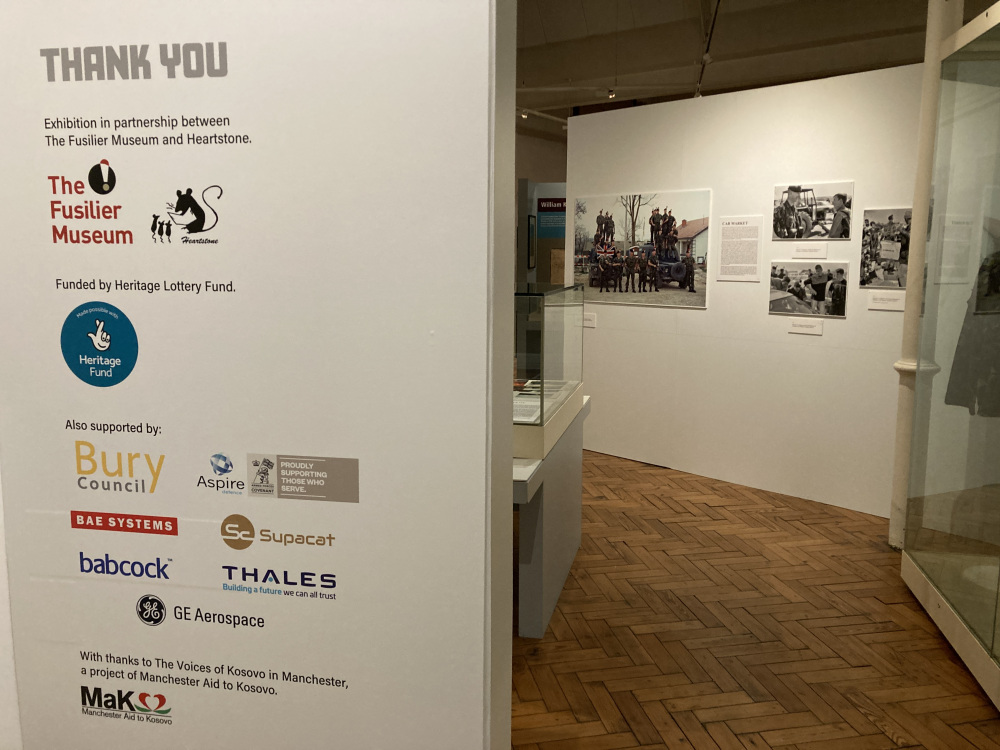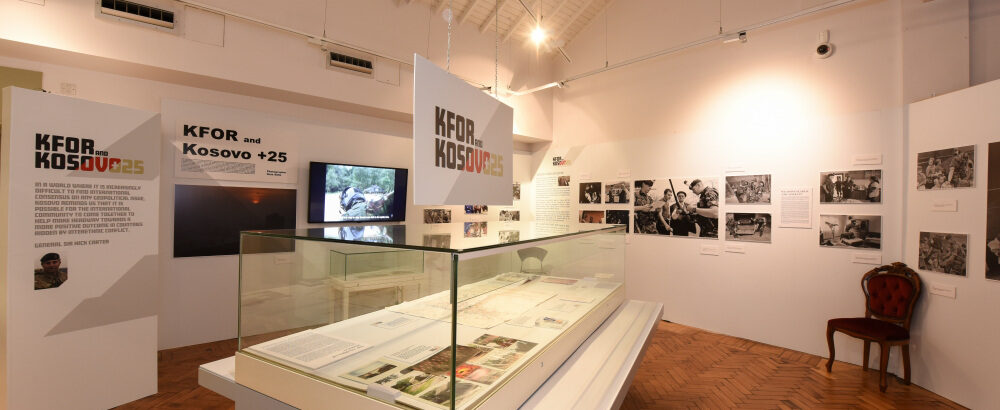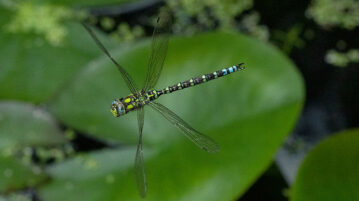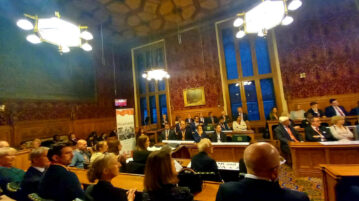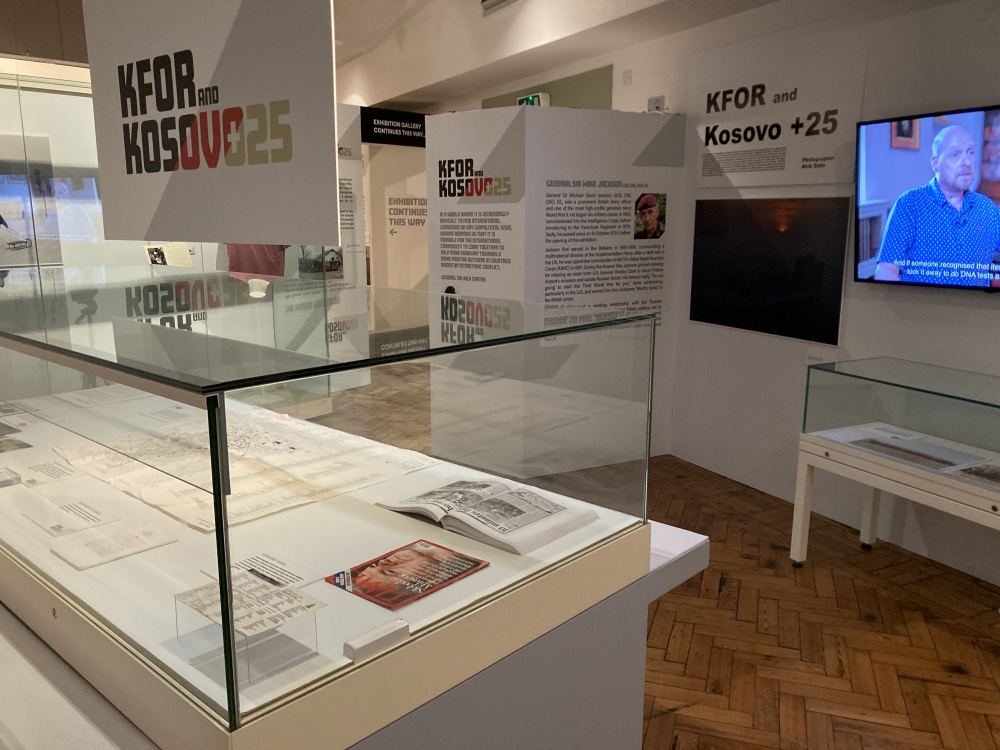
On November 11th 2024, Remembrance Day, the latest ‘KFOR and Kosovo +25′ exhibition opened at Bury Fusilier Museum, the sister museum to the Tower of London Fusilier Museum where the same exhibition had opened in January.
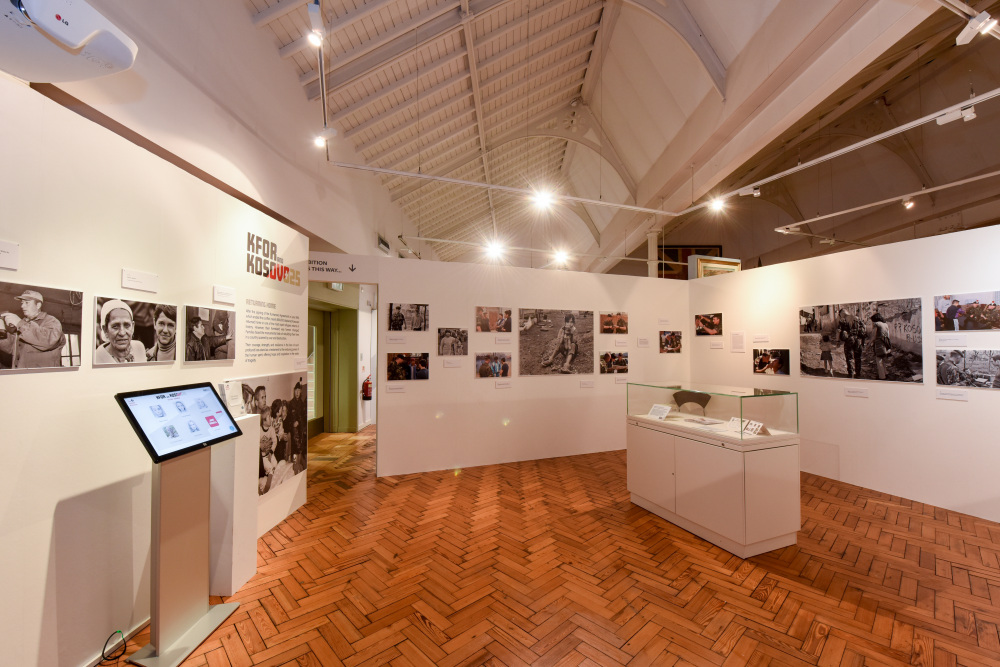
This staging of ‘KFOR and Kosovo +25‘, is a partnership project between The Fusilier Museum and Heartstone and has been funded by the Heritage Lottery Fund. The photodocumentary exhibition, which will be on display till June 2025, features over 50 images taken by photojournalist Nick Sidle who was attached to KFOR in the operation’s early stages in 2000-1. Nick was embedded with several units, including The Royal Regiment of Fusiliers (RRF), and produced a unique record of the work of the peacekeepers as well as highlight the human story of the civilians and the need for intervention to safeguard lives and homes. This exhibition is focussed on his time with the 2nd Battalion RRF.
The museum has worked closely with Voices of Kosovo in Manchester (VoKim), an oral history project created by Manchester Aid to Kosovo in 2016 to record and preserve the story of the Kosovar community in Manchester. Representatives were at the launch event.
Also included in the exhibition are artefacts contributed by veterans who had served in Kosovo and a short film produced by Zoe East from Opal featuring two of the veterans.
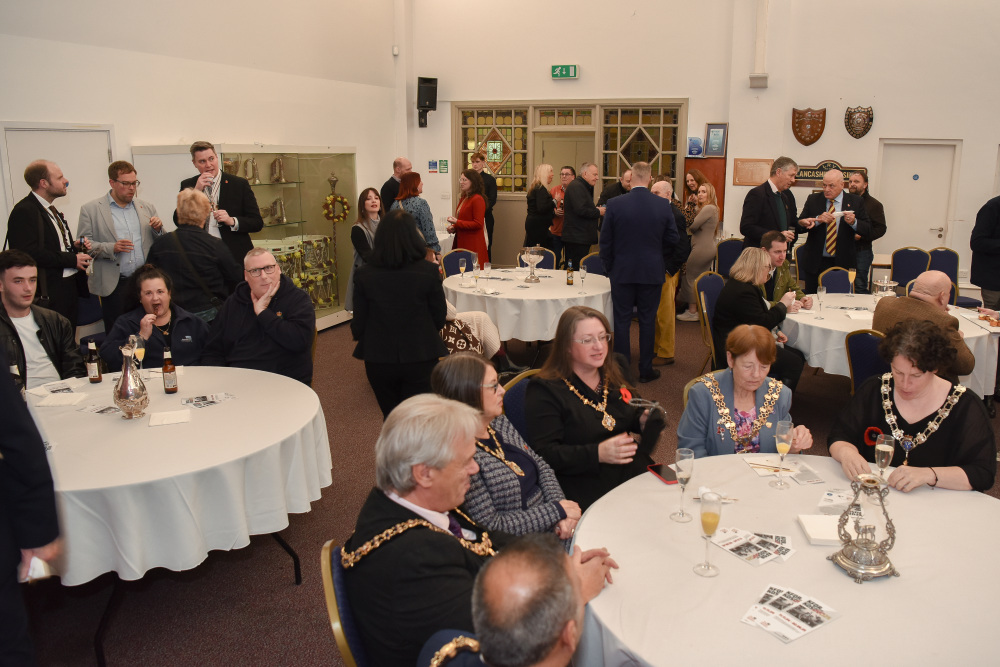
Around 60 invited VIP guests, including Mayors and Cabinet Members of six of the Greater Manchester authorities (in foreground) gathered for the opening of the exhibition. Also present, was David Catterall, Deputy Lieutenant for Bury.
The gathering included representatives of the Kosovan refugee families in Greater Manchester, VOKiM and veterans.
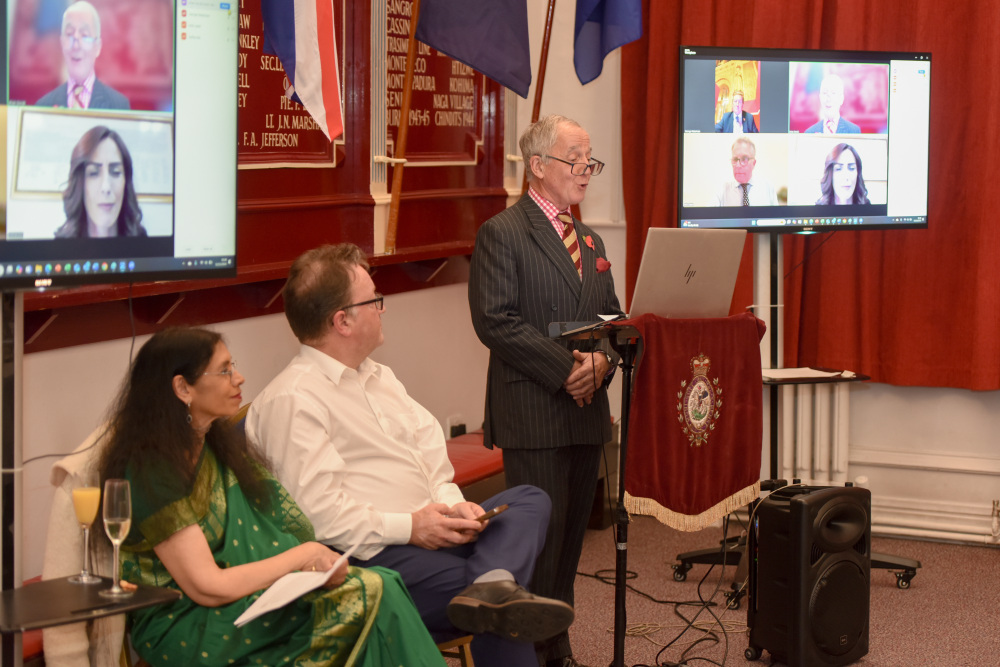
The exhibition was officially opened online by Lord George Robertson, the former Secretary General of NATO, Gen Sir Nick Carter, Ms Vjollca Aliu – Deputy Director, National Museum of Kosovo, who joined from Pristina and spoke of the plans of the Museum to create a permanent gallery for the exhibition in the new Museum currently taking shape. They were complemented in person by Col (retd) Brian Gorski – the Fusilier Museum’s Chair of Trustees (at lectern above), Sitakumari – Director of Heartstone (seated left) and Mr Andy Kelly – Heritage Lottery Fund (seated right).
Ms Vjollca Aliu said:
‘Good evening, everyone. It’s an honor to be here with you today and to share some reflections on behalf of the National Museum of Kosovo and our ongoing journey with this exhibition.
In June, when we first presented this exhibition at the National Museum of Kosovo, it resonated powerfully with our community. This exhibit brought memories, emotions, and histories to the forefront, offering a space for healing, reflection, and remembrance. People from all walks of life came to view these images, each of them bearing witness to a shared past. The public’s response underscored the importance of these stories, reminding us of the resilience of our people and the significance of documenting these moments.
As we continue our work, we’re aiming to develop this exhibition further. Our goal is to progress towards a permanent display when our new museum space opens. We hope to add to these visual stories by identifying and reconnecting civilians in the photographs with their descendants, bridging our history to the present.
We’re also excited to incorporate elements such as Story Circles to engage children and young people. These Story Circles will help us reach future generations, offering them an immersive way to connect with their heritage and the resilience of those who came before them. This educational component will allow young visitors to learn through narratives and will enrich the exhibit as it travels and grows.
Some of the soldiers depicted in these images are present with us in spirit today, through the memories preserved by their loved ones. Among them is Corporal Valentine, whose mother is here with us to honor his memory. His story reminds us that these exhibitions not only depict history but keep alive the legacies of those who sacrificed so much. To the veterans here with us, your presence is a testament to the endurance of memory and the power of collective remembrance. We thank you for being part of this journey.
Lastly, I’d like to acknowledge the importance of arts and culture in fostering connections. We are inspired by the potential for collaboration between Greater Manchester and Kosovo, and we believe that, through projects like this, we can continue building bridges between our communities.
Thank you very much for your time, and I look forward to working together to bring our shared histories to life.’
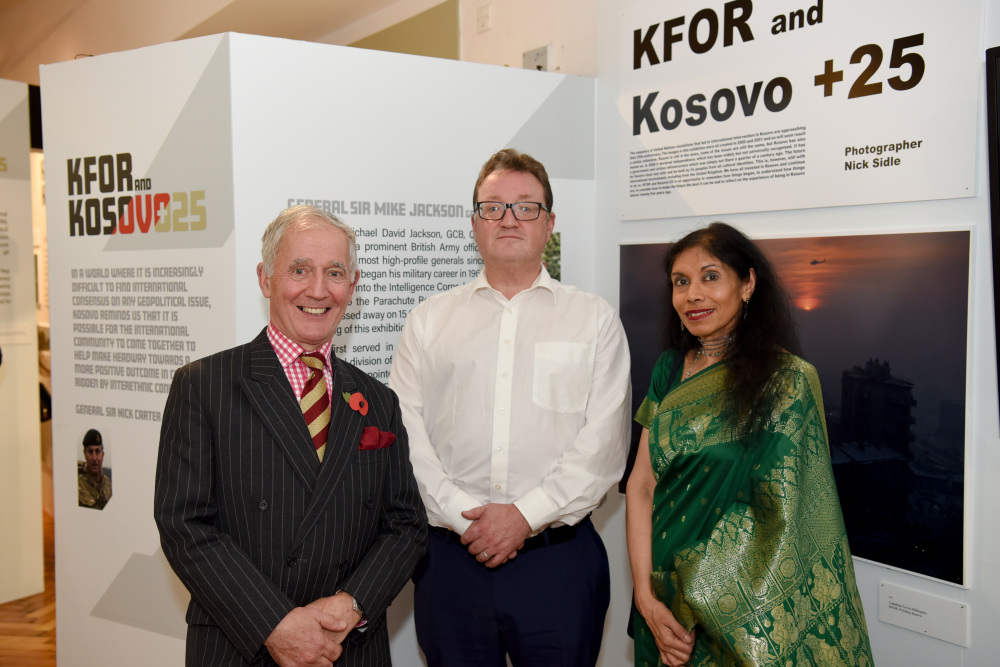
Colonel Brian Gorski, Chair of Trustees, The Fusilier Museum, above right, said:
“ We are delighted to be able to host KFOR and Kosovo +25 and to document a period of history that mustn’t be forgotten. The Fusiliers played an integral part in the Kosovan intervention and it’s our responsibility as the regimental museum to tell all sides of the story. Huge thanks to the Heritage Lottery Fund for supporting our vision and for providing the funding to make it a reality. We hope visitors old and new take the time to visit the museum and make the most of the opportunity to see such thought-provoking photography.”
Sitakumari, Director at Heartstone, above left said:
“ The photostory not only captured the work of the soldiers, it also highlighted the world of Kosovo at the time from a human angle, to enable audiences beyond the country to empathise and understand a world in which intolerance and hate had been taken to new levels and why there was a need for the peacekeeping intervention to safeguard lives and homes, and help rebuild ordinary life in what were extraordinary circumstances.”
Andy Kelly, Heritage Lottery Fund, above centre, highlighted an important point that the exhibition images walked the line between news photography and art and as such, provided a unique insight into what had happened in Kosovo at the time.
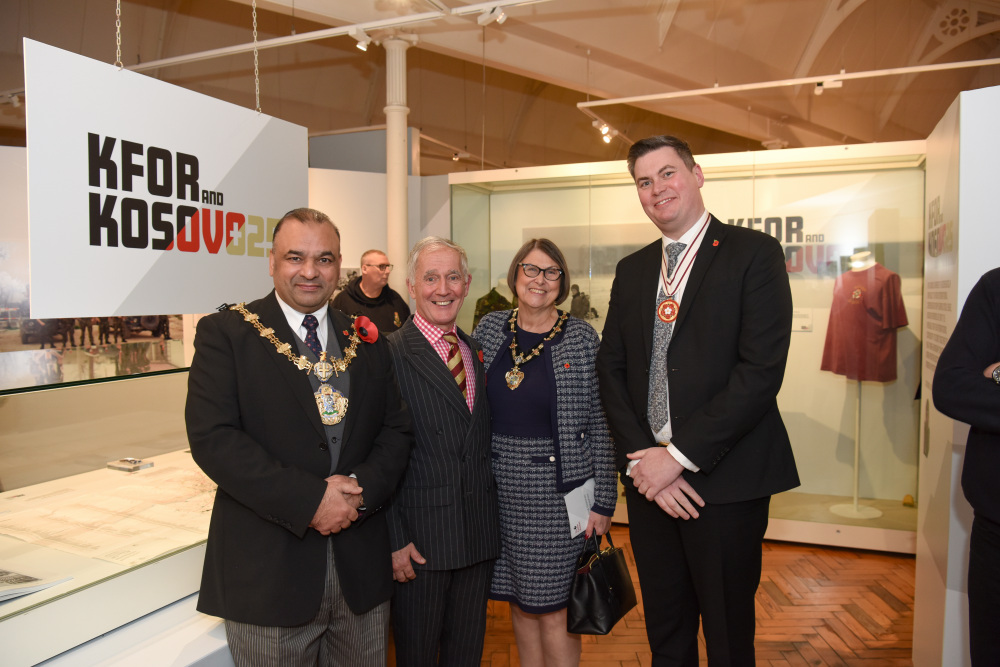
One of the special guests, David Catterall, is a Deputy Lieutenant for Greater Manchester and Bury as well as Head of Commercial Service for Bury. He is pictured here at left together with two of the Greater Manchester Mayors and Brian Gorski, Curator and below with Sitakumari. He said:
“Visiting this unique and poignant exhibition at the Fusilier Museum was incredibly moving. Not only has the photographer captured the horrors of war and division, but he has managed to show a glimpse of humanity and how hope is always present. The complex stories of each photo have incredible depth and demonstrate how fragile our lives can be.”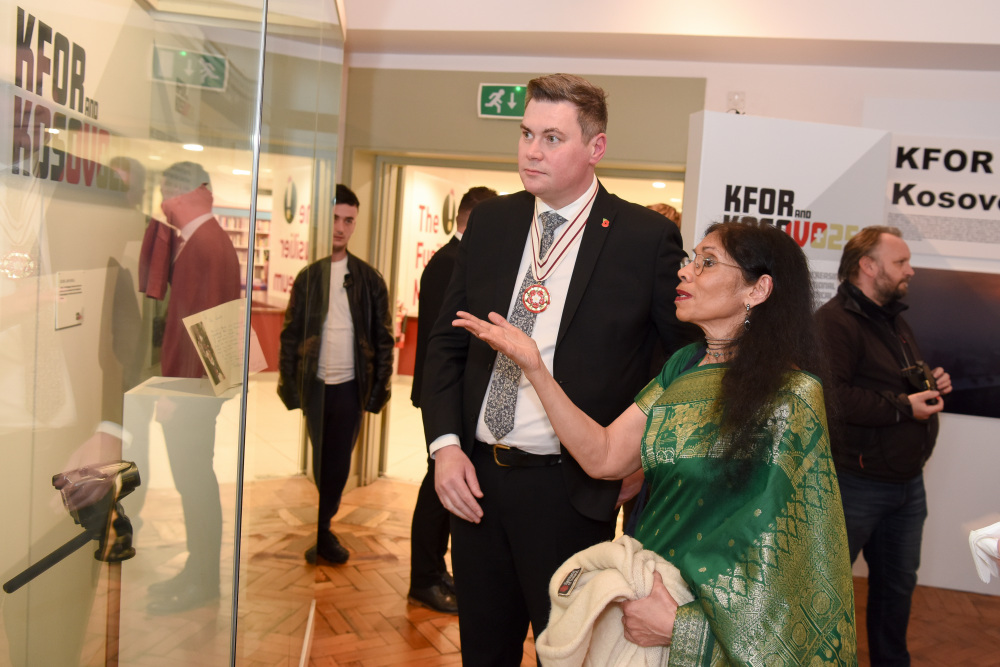
He is now assisting with plans to extend the exhibition across Greater Manchester.
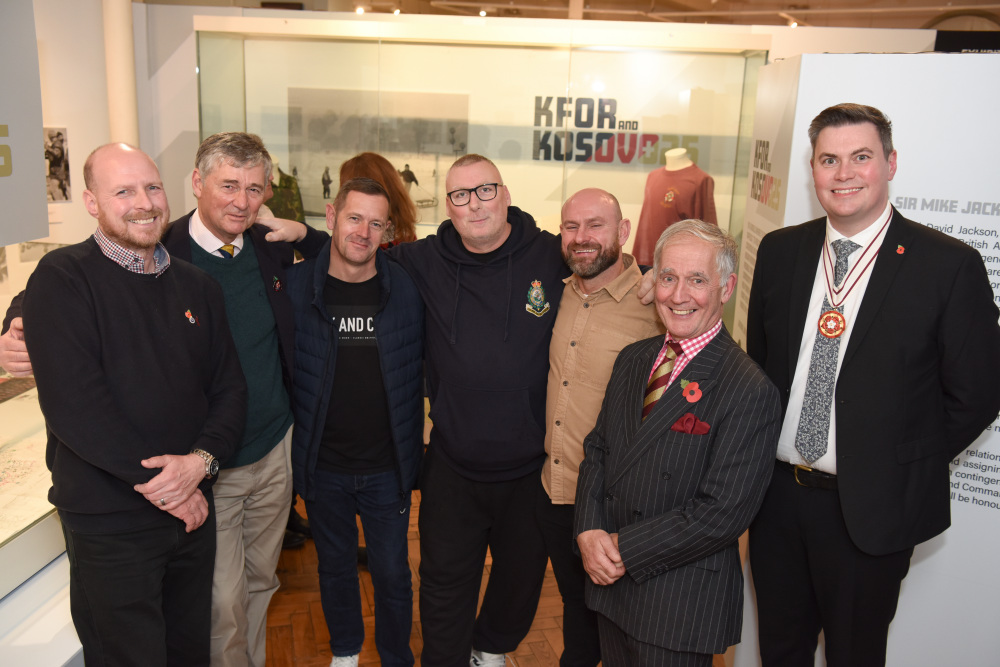
Invited veterans pictured here, including Col John Powell (2nd from left), together with Col Brian Gorski and David Catterall, DL, were all active in Kosovo at the time of the photodocumentary and had vivid experiences to relay.
Contributions of artefacts from the veterans included personal photos, maps, letters, clothing and other important and precious items adding a further layer of connection.
Paul Davies (1st left), was actually featured in several of the images as the concluding part of the Cpl Simon Valentine story.
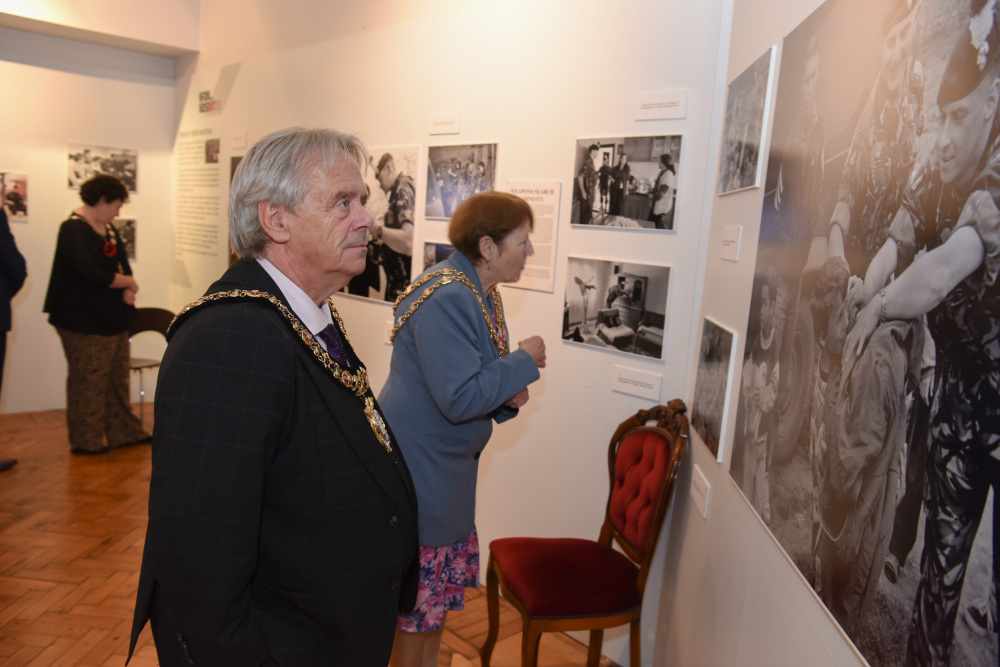
The Mayor of Manchester (left) looking at one of the images of Paul Davies then, handing out blankets to the children in the village following the report of Cpl Simon Valentine, pictured with the recently returned ethnic Albanian family in their home (below right).
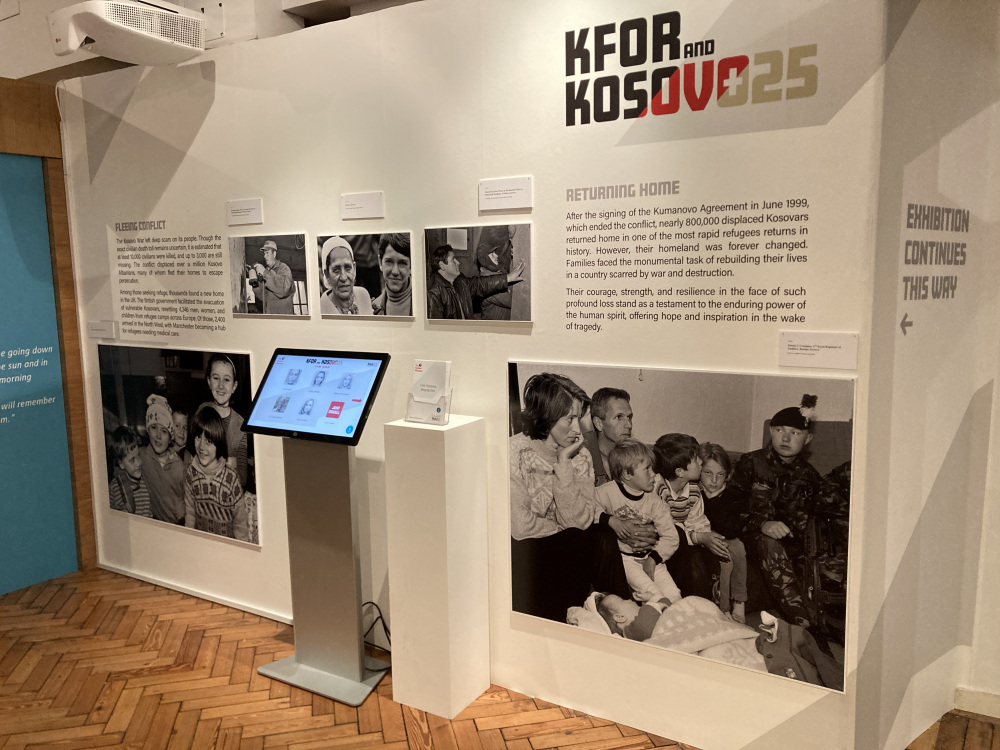
Paul said:
‘I felt the exhibition sent mixed emotions through me.
Looking at the photos bought back many memories, some good/happy and some sad/disappointing), and I can’t believe it was 25 years ago, when looking at the photos. It almost seemed like yesterday.
I felt very humbled at meeting people, who thanked me when they were only children, and even to this day it still amazes me at the resilience of the children.
I feel very privaliaged at being asked to contribute in my small way.’
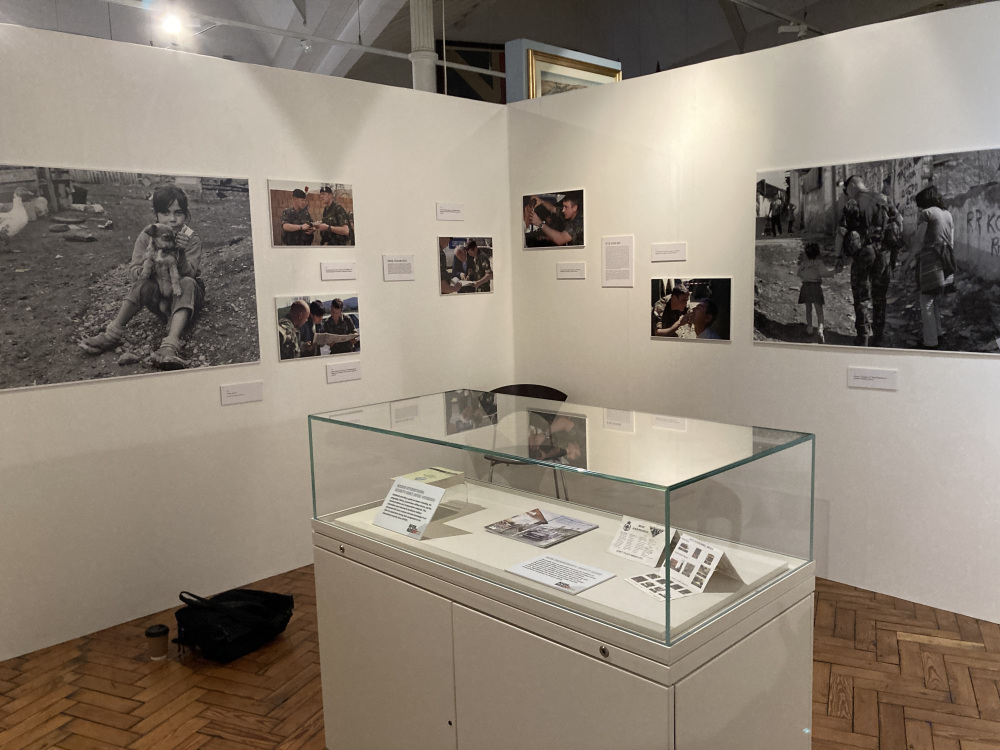
Ian Young, the soldier with the little girl taking his hand in a dangerous alley, image above on the right, one of the ‘signature’ images of this photodocumentary, which achieved worldwide acclaim in 2001, is another of the veterans in the images who has been located and an interview with him is now being added to the photostory. Drew Gibson, in several of the images above showing farmers where they can safely plant crops and treating an eye injury, has also been located and his story, 25 years later, added. Similarly, Billy Miller, who used his passion for football to get kit out to Kosovo, form a team and is seen pictured with young men, from all communities, setting out for a match. The reason this worked was that no-one asked them which family they came from – what united them here was a strong desire to play the game, which therefore became a tool to overcome longstanding hatred and division.
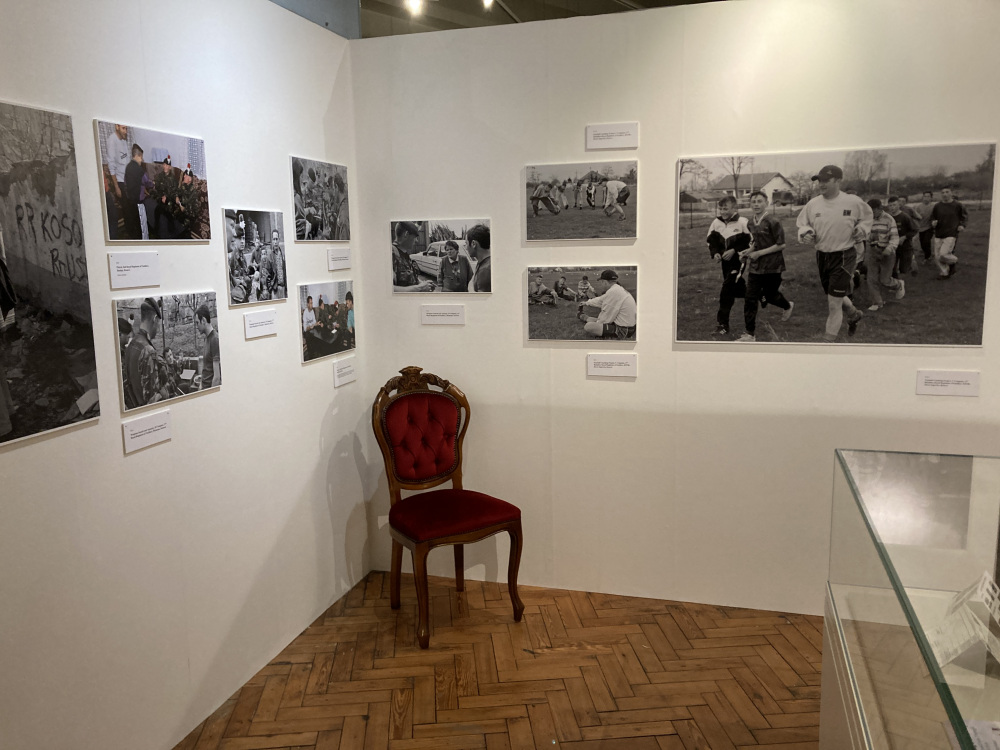
The photodocumentary acted as a setting for different experiences to be voiced, how the individual soldiers were able to create a sense of safety and security, after the war, in a world where fear and suspicion were amongst the feelings which had taken hold. This was about dealing with extremes of intolerance and hate and several veterans present spoke about their own difficulty coming to terms with how far this could go. They spoke of what they did in practice, as depicted in the images – weapons searches, vehicles searches, running basic services and many other points of interaction with civilians and how for example, wearing their soft berets, carrying their weapons in a particular manner and communication successfully through an interpreter all contributed to building trust and confidence and helping in the task of building cohesion and a functioning society. The experiences spoken about were those of finding resilience and hope, as reflected in the images, and thus a different face of the story, which was not often told – what happens when the war is over.
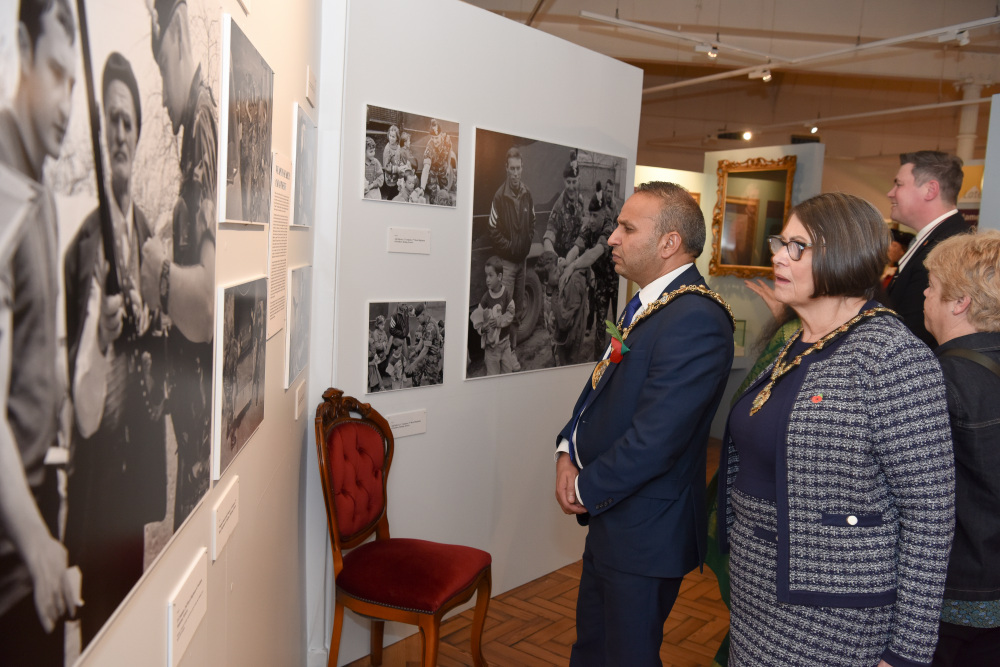
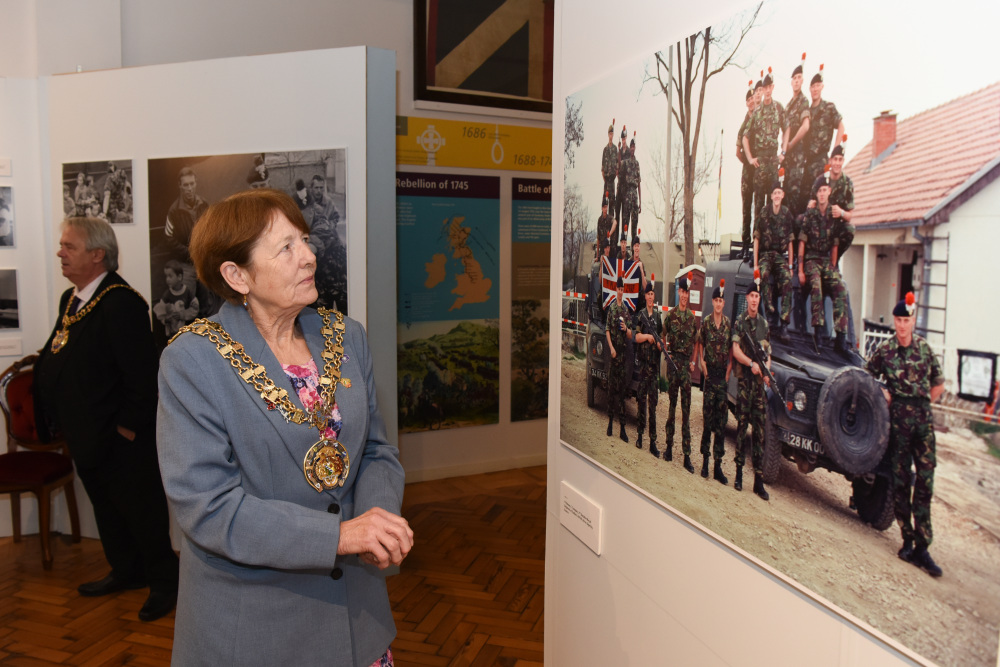
All those who visited the exhibition spoke of its portrayal of the human story, its role in building a greater understanding of peacekeepers and the need for co-operation in the face of intolererance, hence its value and relevance today.
Plans are now underway to see the full-scale exhibition brought to Greater Manchester and additional satellite exhibitions and installations take shape across the region to reach as wide a population as possible.
As Lord George Robertson said:
‘The photodocumentary shows how out of a very dark period of history a positive future was able to take shape’
Our grateful thanks to the staff of the Museum, in particular Museum Curator, Ria Bagshaw for her exceptional work to present the exhibition with great care and sensitivity, Gini Wilde for all her work in marketing and Zoe East from Opal for production of the film.
We would also like to thank Heritage Lottery Fund, Bury Council, Lord Michael Hintze, Sir Gerald Howarth, BAE Systems, Thales, Babcock International, GE Aerospace, Supacat and Aspire Defence Ltd for their funding and the support of VoKIM, a project of Manchester Aid to Kosovo, for this exhibition at the Bury Fusilier Museum presented as a partnership between the Museum and Heartstone.
